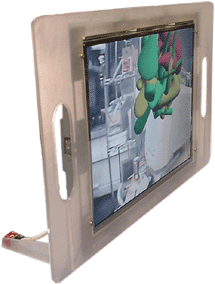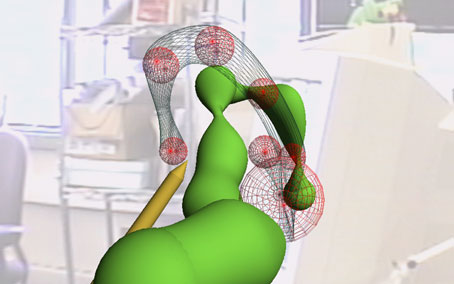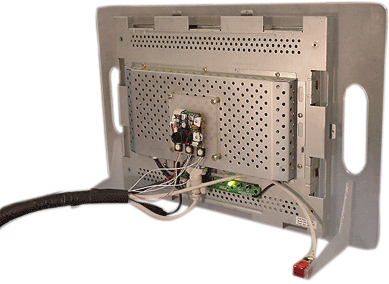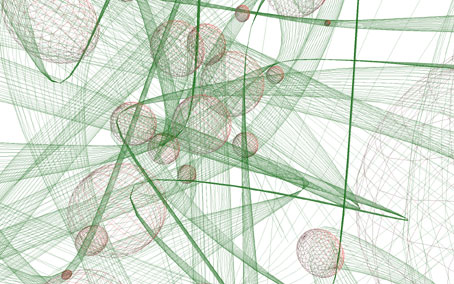Implementation
| Physical forms | Software |
||
 |
|
 |
|
|
The viewing window from the front. Wafer thin.
|
Blobby forms are created with a stylus that is tracked in three dimensions. [movie, 2MB] (Requires QuickTime 5) | ||
 |
 |
||
|
The stylus is an inductive position and orientation sensor with a button attached.
|
Once objects are created they are placed into the space of the room. [movie, 3 MB] (Requires QuickTime 5) | ||
 |
 |
||
|
The viewing window from
behind. Notice the position sensor on the lower right and the camera
in the center.
|
The forms generated in Installation are described by a method developed specifically for this application. It is a very fast way to model and render complex organic forms. [movie, 6MB] (Requires QuickTime 5) |